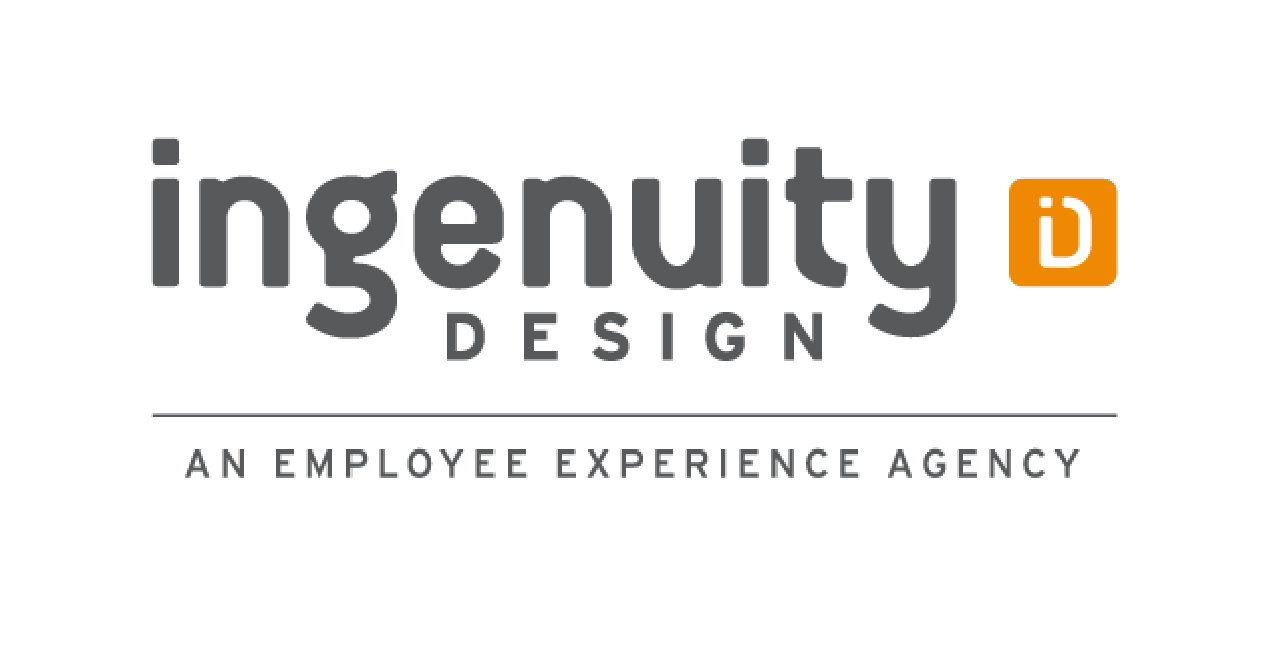
The Imbalanced
State of Employee
Connections at Work

The Imbalanced
State of Employee
Connections at Work
There’s nothing like the power of connection to bring about higher employee commitment to their work, team, and organization. In our work with countless organizations, we’ve seen that the kinds of connections employees have at work can affect everything from their engagement to their sense of belonging. In fact, we believe the depth of employee connections—to their work, their coworkers, customers, and the organization—is the key to improving the employee experience and helping organizations thrive from the inside out. And our latest research backs up that belief—in several eye-opening ways.


Building on the success of our 2022 Employee Connections Study, which revealed the many benefits of building a super-connected workforce, we decided to go further with this year’s report. Working with our partners at Audience Audit, who provided the quantitative analysis of our survey results, we did a deeper dive into the many ways workplace connections impact the entire employee experience. Based on our findings, we’ve identified some key strategies that will help HR and internal communications leaders shape more connected and positive experiences for employees at all levels.

We studied the survey responses of 400 US professionals, at VP level or below, who work in organizations of 1000 or more employees.
We wanted to know what helped them feel connected at work (or not) and which factors have the greatest impact on their ability to feel more connected and engaged.
This report will cover:
The different attitudes of Connected and Disconnected Employees
What stands in the way of deeper workplace connections
How organizations can start building more connected workplaces
A Conversation About
Our Latest Research
Greg Stewart, Ingenuity’s Founder, discusses research findings from the 2023 Employee Connections Study with Susan Baier, our research partner from Audience Audit.
Why Employee Connection Is a
Must-Have For Every Workplace
Employee connection is essential for creating the meaningful bonds that help define the human experience and drives positive outcomes for employees and organizations:
Higher Engagement
Employees who experience regular, meaningful connections with their managers are more engaged at work.1
0%
Higher Productivity
Employees who are connected at work experience 34% higher goal attainment and 92% higher professional growth.2
2 BetterUp
0%
Overall Performance
In a 2023 survey, employees said feeling connected at work improved their ability to do their job (60%), their work quality (58%), and their ability to serve customers (47%).3

In our 2023 research, we found that workplace connection is highly valuable not just because of the positive outcomes it brings, but also because most employees want it. They especially want to feel connected with their coworkers, work, and direct manager.
Top 3 responses to “Which of these is very important for you to feel connected to?”
Benefits of Connection
Identified in Our Research
Positive perception
of company culture
Connected Employees were more likely to say their organization’s culture is positive, connected, engaging, motivating, and caring.


Higher Retention
Connected Employees (75%) were more likely than Disconnected Employees (28%) to say they plan to stay with their company for at least the next year.
Higher Employee Loyalty
and Enthusiasm
Connected Employees were more likely to recommend their organization to another professional, giving their employer a net promoter score (NPS) of 65 vs. -33 from Disconnected Employees.


Employee connections at work can mean the difference between a disengaged and isolated workforce, and one that is engaged and enthusiastic about the employee experience.

THE HAVES & HAVE NOTS
Connected vs. Disconnected
Employees
This year’s survey respondents represent a diverse spectrum of employees from large companies across the country, of different levels and job functions, working both remote, hybrid, and on-site.
Employees
Employees
Unfortunately, there are more
disconnected than connected employees.
We found that these employee demographics and other characteristics didn’t have a statistically significant impact on employee perceptions of connection at work:
Work Location
Overall company Size
Employee Characteristics
(job level, number of direct reports, industry, work function, industry and company tenure, work location)
Demographics
(age, gender, ethnicity, marital status, education level, income level)

Instead, we found that day-to-day work experiences are what differentiate Connected and Disconnected Employees and contribute to such an imbalanced state of employee connections. It’s the environment they work in and the actions of everyone in the workplace that allow connection to grow (or not).
What we found about
these two groups
Connected
Employees
Strongly aligned with company
and team
Like the super-connected Secure Employees in our 2022 study, these employees feel a close bond to their work, team, and employer. Most said they’ve never felt as connected to an organization as they do with their current one. Connection isn’t fleeting or periodic for them: they feel connected at work every day.
Connected Employees are:
Very close to their coworkers
They want to be friends with people at work who they can speak with and confide in.
Aligned with their employer
They believe in their organization’s mission and vision.
Trusting in the organization
They think their organization does a good job of prioritizing connection and providing opportunities for it to grow.
44
Of Respondents

Disconnected
Employees
Discouraged
and distrustful
For a group that represents the majority of employees, it was unfortunate to learn that Disconnected Employees feel so isolated at work. They have the same desire as Connected Employees to feel closely aligned with their work and team, but like the Discouraged Employees in our 2022 study, they can’t achieve it.
Disconnected Employees are:
Pessimistic about
the future
They see several obstacles in the way of achieving connection, including their organization’s size and structure, their manager, and individuals who purposely undermine connection in the workplace.
Disillusioned with their employer
They think their company pays “lip service” to connection with no action to back it up.
A Flight risk
They’re willing to leave their company to seek the connection they don’t see as possible with their current employer.
56
Of Respondents


Connected and Disconnected Employees appear to work in different organizations. One creates and maintains employee connections, helping to fuel higher engagement and retention. The other struggles to build employee connections, and leaves employees feeling discouraged and ready to leave.
Quick Wins
How to Build Better
Employee Connections
Since every organization has its share of Connected and Disconnected Employees, the key is to cultivate workplace connections that fulfill the needs of both groups. Our research has shown us that whether employees are connected or disconnected, there are some basic elements they require to form deep and lasting bonds in the workplace.
What helps you feel connected to your organization?
| Having options for career advancement within the organization | 30% |
| One-on-one meetings with my direct manager/supervisor | 30% |
| Becoming friends with coworkers | 28% |
| Believing in the organization’s mission and vision | 28% |
| Celebrating wins | 26% |
| Team-building events | 25% |
| Performance reviews | 24% |
| Everyday “water cooler”- type interactions with coworkers | 23% |
| Casual interactions with other departments/teams | 23% |
| Lunch with coworkers | 22% |
| Shared values | 21% |
| Company meetings/events/all-hands meetings | 20% |
| Learning and development/training programs | 20% |
| Meetings with other employees | 20% |
Managers can achieve quick wins in cultivating individual and team connections by doing the following:
(Click to Expand)
Say thank you more often, even if it’s thanks for things that are part of an employee’s daily responsibilities.
Help everyone on the team feel like they’re a part of something by sharing updates, communicating often, and using team meetings to bring people together on a common goal.
Recognize each individual for who they are and their unique needs, not just what they can do.

Four Big Lessons from Our Research, and
What It Means for Your Organization
This study has shown us that employees want connection at work, but most aren’t getting it. To help correct the employee connections imbalance, we’ve identified the key lessons from our research that can serve as a valuable guide for HR and internal communications teams in need of a more connected workplace.

1
Number 1. Workplace Connection
Requires Trust
Though both Connected and Disconnected Employees have some degree of trust at work, Connected Employees have dramatically higher levels.
87% of Connected Employees trust the coworkers on their team…
87% of Connected Employees trust the coworkers on their team…
…compared to only 50% of Disconnected Employees
Disconnected Employees also have much less trust in company leaders (21%) and HR (18%).
To what extent do you trust these groups in your organization?
- Connected Employees
- Disconnected Employees
Direct supervisor/manager
Other supervisors/managers
Coworkers outside of my team
Current ownership
Leadership
Human Resources
Given that Disconnected Employees lack trust in the organization, what can you do about it?
(Click to Expand)
Everyone receiving the company message is important, but employees believing and trusting in it is what creates better connection in the organization. Deliver authentic communication consistently and provide more context as to how and why decisions are made. Town halls, team meetings, and one-on-ones are opportunities to reinforce and allow for varying levels of understanding.
Create a culture where promotions, new assignments, and other opportunities are made available broadly, not via hearsay and office politics.
Launch initiatives such as new employee resource groups and cultural celebrations to help employees feel they belong.

2
Number 2. Missed Opportunities to Deepen
Employee Connections Can
Push Employees out the Door.
Far more Connected Employees than Disconnected Employees said they definitely would stay at their organization next year. They cited several reasons for staying, especially work-life balance, feeling valued, and compensation.
Are you planning to stay at your organization for the next year?
- Connected Employees
- Disconnected Employees
Interestingly, the factors Connected Employees said made them want to stay with their employer (work-life balance, feeling valued, and pay) were the same factors Disconnected Employees said made them want to leave.
One in three Disconnected Employees who said they were planning to leave, said a lack of connection to their work made them feel that way.
Based on survey responses, it’s clear Disconnected Employees are telling their employers what’s required to retain them. Here are some of the elements you can weave into employee experiences to help them feel more connected, valued, and less likely to leave:
(Click to Expand)
Helping employees understand pay policies and where they fit in can go a long way in building understanding. It can also help prevent employees from walking away based on an incorrect assumption about their pay potential in the company.
Employees’ desire to have more control over where and how they work has never been stronger. Look for opportunities to provide flexibility that meets a broader range of employee needs.
Consider how company meetings, mentorship programs, and team activities in and outside work can help employees connect on a professional and informal level.
Employer branding isn’t just for recruiting. Build enthusiasm internally about the exciting things your organization is doing and why employees can feel great about playing a part in making it all happen.
The best way to understand what employees need to feel connected and eager to stay is to ask.

3
Number 3. Great Workplace Communication
Isn’t Driven by Place or Quantity,
but by Depth and Variety.
Our survey results have revealed that effective workplace connection isn’t dependent on how many people employees interact with at work. Both Connected and Disconnected Employees agreed that having close relationships with just a few coworkers was enough for them to feel connected.
We also found that bringing everyone back to the office won’t automatically create connections among employees. When we asked employees which work structure helped them feel more connected at work (e.g., in person, hybrid, or remote), they overwhelmingly voted for their current work structure, whether they were working primarily in the office, from home, or a mix of the two.


What we did identify as more critical for effective workplace communication were the kinds of conversations employees had at work and the different avenues they had for communicating.
For example, Connected Employees were more likely than the Disconnected to cite a broader range of communication types available to them at their organizations, especially their access to messaging platforms and in-person discussions.
What types of communication does your organization use?
- Connected Employees
- Disconnected Employees
Messaging platform
In-person discussion
Phone calls
Company intranet
SMS text messaging
Centralized bulletin board
Social media posts/messages
Handwritten notes/letters
Project management platform
Connected Employees said they participated in a variety of work conversations at a higher rate than Disconnected Employees.
For example, the majority of Connected Employees said they engaged in check-ins and personal conversations with their manager, but only a little over a third of Disconnected Employees reported having these conversations.
What types of conversations do you participate in at work?
- Connected Employees
- Disconnected Employees
Given the sizable disparity between how Connected Employees are communicating at work compared to Disconnected Employees, you’ll need to look for opportunities to include the Disconnected in more conversations and give them more outlets to express themselves. Here are a few ideas:
(Click to Expand)
If your organization relies more on email than anything else, consider adding other communication types. For example, maybe you can expand the company intranet or launch a campaign to encourage more consistent use of your internal messaging platform.
Make it okay to discuss topics and situations that may be perceived as “off limits” or taboo.
If every manager in your organization isn’t having regular one-on-ones with their direct reports, Disconnected Employees may be missing out the most. Since 86% of highly engaged organizations conduct regular employee one-on-one meetings4, why not be one of them?

4
Number 4. Only the Right Kinds of Feedback
Will Positively Impact Connection
It’s no secret that employees everywhere value consistent, positive feedback, and our survey respondents are no exception. However, when it comes to constructive criticism and goal setting, we found that Disconnected Employees are less likely than Connected Employees to see it as helpful.
What types of feedback are most helpful to you?
- Connected Employees
- Disconnected Employees
Giving positive feedback is low-hanging fruit for building connections; it just takes effort and intention. Sometimes, it’s as simple as sending a quick email or message pointing out what an employee did well during a project.
But providing constructive feedback about an employee’s areas for improvement isn’t as simple. Here are some ways you can help managers improve their mastery of this invaluable skill:
(Click to Expand)
Believe it or not, only 14.5% of managers strongly agree that they are effective at giving feedback.5 Train managers and give them on-the-job experiences that will hone their ability to provide feedback and coaching effectively.
5 Gallup
Often, constructive feedback is seen as “negative” and viewed as a precursor to a poor performance review or worse. But if the feedback is framed as additive to an employee’s growth and development, and employees can see examples of this in the workplace, they are likely to be more open to it.
Managers aren’t the only ones who can provide the development feedback employees need. Consider the role peer-to-peer feedback and a mentorship program can play in helping employees identify their strengths and flat spots.

Unlock the Power of
Employee Connection
As our study has found, employees have a strong desire for connection at work and all that it entails—trust-filled relationships, balanced feedback, honest communication, and more. Thankfully, the main difference between employees who feel connected at work and those who don’t is the experience they have at work. This is great news for employers.


By cultivating more trust, communication, and deeper interpersonal connections, you can build a culture that harnesses the power of employee connections and strengthens your business from the inside out.


Share this report

Stay tuned for more research findings!
In the next six months, we’ll share more from our research covering managers’ experiences with connections, how layoffs impact employee connection, and the role of total rewards.
Follow us on LinkedIn and stay in touch for the next report summarizing additional findings.

About Ingenuity Design
We’re an Employee Experience agency that strengthens companies from the inside out. We advise and create value-driven employee experiences across the employee lifecycle to help make companies great places to work. We’re proud to work/have worked with eBay, TD Bank, Splunk, Visa, Gap Inc, and Thumbtack, to name a few.
About Audience Audit
Audience Audit helps marketing agencies build ROI and reputation based on original thought leadership research. Founded in 2009, the firm has conducted audience research for hundreds of agencies and their clients.